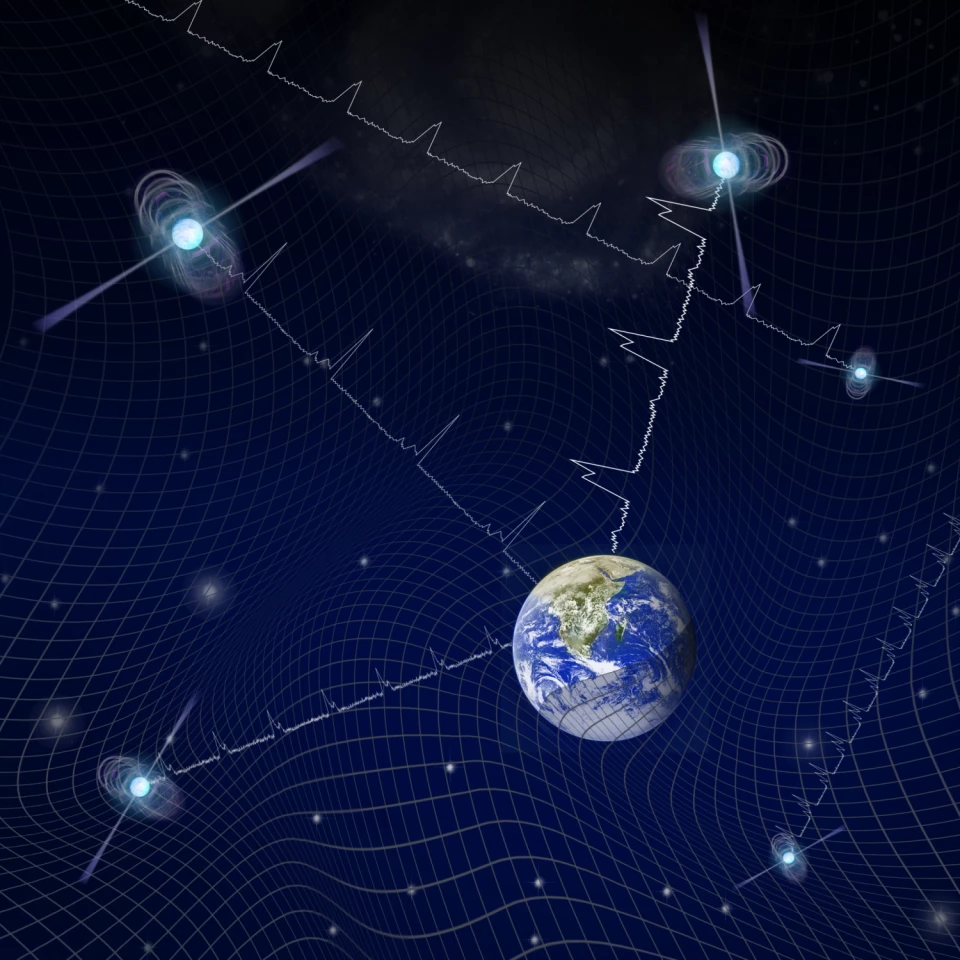The gravitational waves we’ve detected so far have been like tsunamis in the spacetime sea, but it’s believed that gentle ripples should also pervade the universe. Now, a 13-year survey of light from pulsars scattered across the galaxy may have revealed the first hints of these background signals.
Gravitational waves are distortions in the very fabric of space and time, usually created in collisions between black holes and/or neutron stars. The waves were first predicted a century ago by Einstein’s theory of general relativity, but weren’t directly detected until 2015, with dozens more picked up in the years since.
Although they originate from some of the most energetic events in the universe, by the time these waves reach Earth, they’re actually only distorting reality on incredibly tiny scales – roughly one thousandth the width of a proton.
And that’s just the big ones. All gravitational wave detections made so far have been sharp, sudden signals from cosmic cataclysms, but there also should be a steady background hum of lower-frequency waves out there too. However, these are much harder to detect as they are of a much lower frequency and therefore a longer wavelength, meaning it takes much longer for a single wave to complete its passage past Earth. But finding them is the goal of the North American Nanohertz Observatory for Gravitational Waves (NANOGrav).
“Other observatories search for gravitational waves that are on the order of seconds,” says Joseph Simon, lead author of the new study. “We’re looking for waves that are on the order of years or decades.”
Currently, finding gravitational waves requires extremely sensitive instruments like LIGO and Virgo, which beam lasers down 4-km-long ( 2.5-mile) tunnels and watch for minuscule distortions in the light. But NANOGrav scales that way up to make use of the entire galaxy.
Pulsars are fast-spinning stars that swing beams of radiation over Earth in predictable pulses, with their cycles remaining steady over eons. But like the lasers of LIGO, gravitational waves should stretch and squeeze their light as they pass by, which may allow astronomers to detect the low-frequency gravitational wave background.

The NANOGrav team has been observing 45 pulsars from across the Milky Way for anywhere between three and 13 years. And now, the data seem to hint at some common process that’s affecting many of them.
“We’ve found a strong signal in our dataset,” says Simon. “But we can’t say yet that this is the gravitational wave background. We walked through each of the pulsars one by one. I think we were all expecting to find a few that were the screwy ones throwing off our data. But then we got through them all, and we said, ‘Oh my God, there’s actually something here’.”
The team says that further work will need to be done to confirm whether this signal is from the gravitational wave background. Ideally more pulsars will be added to the watch list, and the whole bunch will need to be observed for longer periods.
If the detection is confirmed, finding their origin may be the next steps. It’s believed that the background signals may come from collisions between supermassive black holes lurking at the center of galaxies.
“These enticing first hints of a gravitational wave background suggest that supermassive black holes likely do merge and that we are bobbing in a sea of gravitational waves rippling from supermassive black hole mergers in galaxies across the universe,” says Julie Comerford, a team member on NANOGrav.
The research was published in the Astrophysical Journal Letters.
Source: University of Colorado Boulder





